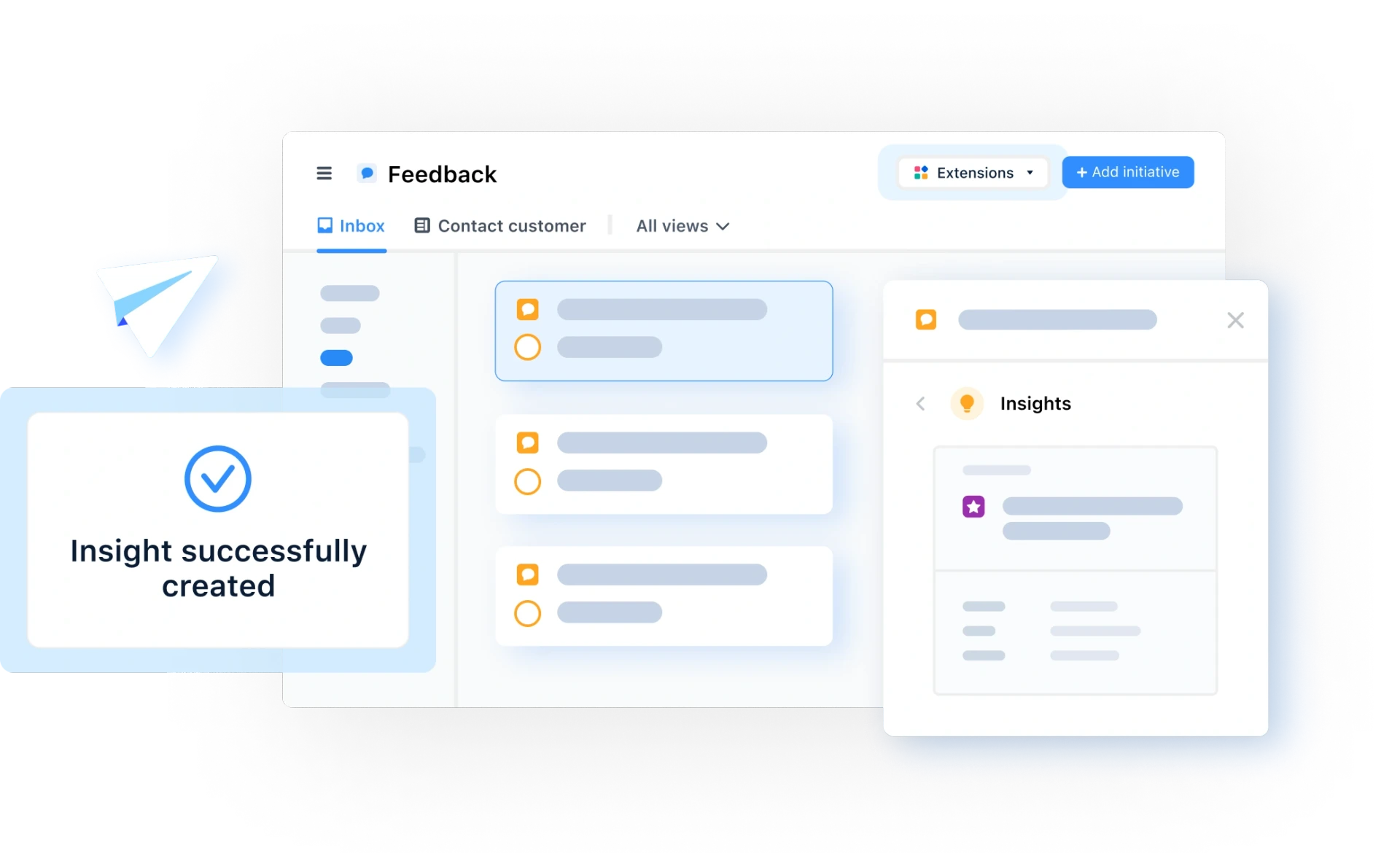Feature Request Management
What is feature request management? (+ 5 tools to use)
Definiton of Feature request management
Feature requests are a form of feedback that users give a company. This could be something simple like a slight change to product flow or something entirely new that they feel will improve the product. Feature request management is simply the name given to the various ways of prioritizing these feature requests.
For your business to grow, you need to constantly keep in touch with your customers and their needs. You can pack your product full of features, but if it’s not addressing your customers’ actual needs, it won’t help anyone.
But when you open your development process up to the general public, you’re going to be swamped with feedback and feature requests. That leaves you with a bunch of feature requests you need to sort through and assess.
Which leads us to the question; how do you accurately manage feature requests in a way that brings actual value to your product?
Let’s take a look at some tools to help you out.
Download Now: Get our 5-minute guide on Why Insights Are Essential and How to Source Them
Feature request management tools
airfocus
Airfocus lets users build and prioritize roadmaps, collaborate on strategy, and manage multiple products and advanced workflows in a secured environment. Not only does airfocus offer great software and the Ultimate Guide to Prioritization, but they also recommend the “Buy-a-Feature” method for feature request management.
Trello
Trello allows the team to set up a public board where customers can log in and vote for their favorite feature by commenting on the cards. With Trello, you can allow access to the general public. This allows customers to add their own feature requests and gives you the ability to create a Kanban-style customer-facing roadmap.
Feature Upvote
Feature Upvote collects feature requests from various sources on an online feature request board. Boards can be private or public, allowing team members and customers to upvote ideas and requests.
Savio
Savio is a lightweight but powerful feature request tracking tool. It allows teams to collect user feedback and present it in a way that helps you understand what customers truly want. You can then prioritize features by your most important criteria. It allows you to create a complete knowledge base of your users’ pain points and ideal solutions.
Hellonext
Hellonext is a dedicated feature request tool where you can manage and organize all the feedback you receive. Teams can publish roadmaps and complete the entire feedback process in one place. Hellonext also allows you to give customers access so they can vote on any feature requests.
What is feature request tracking?
Feature request tracking is the art of managing feature requests to grow a product. It includes enabling customers to request new features, operating a database to store feature requests, and ranking them by various criteria to identify the most attractive ones.
How to Manage Product Feature Requests
Managing feature requests can be a challenging task if you don’t know how to approach them correctly. Instead of jumping straight into the deep end, here are six essential tips you can use to manage your product features.
Put everything in one place
Social media has made collecting feedback an incredibly tough task. The various platforms offer customers different ways of contacting your company, which makes organizing their feedback a much more difficult task than it needs to be.
Download Now: Get our 5-minute guide on Why Insights Are Essential and How to Source Them
Using software that grabs every bit of user feedback from every platform and puts it into one place is essential if you’re ever going to gain value from customer-submitted feature requests.
Create a system for receiving and managing requests
Like we explained in the first tip, having all of your feature requests in one place makes it far easier for your team to gain valuable insight from customer feedback. This applies to the customers too!
More often than not, the customers with valid and helpful feature requests will look for a reliable way to give their feedback before turning to social media or generic email forms. They want to know you will acknowledge their input rather than having it lost in the ether.
This is easy to address. Simply offer a dedicated system for feature requests. That way, your customers know they’re giving their feedback to a company that cares about what they have to say while allowing them to organize these feature requests easily.
Prioritization and feature requests
With all your feature requests in one place, you can start to classify and prioritize. Some of the software we mentioned earlier will automatically classify and prioritize based on your criteria.
If you’re prioritizing manually, simply create groups that best represent each feature request. For example, if you have submissions that focus on UX, make a UX category and place all relevant requests in that group.
Once your groups are established, you can look at each request in a group and quickly see which requests are most important.
Discuss features with your teammates and relevant stakeholders
Customers who request new features will want to see those features implemented. But that doesn’t mean their suggestion is best for the company.
Discuss the feature requests as a team to assess various factors involved in making that request a reality. Does the team have the means to make that feature? Can it be fulfilled in a realistic timeframe? These types of questions will help you to prioritize requests in a way that will bring the most value to your product.
Maintain a public product roadmap to keep track of product development efforts
Offering your customers a public roadmap offers transparency as a company. It helps your users see that their requested features are being worked on, and will be available in a specified timeframe. This also opens up the floor for customer feedback if they feel prioritization doesn’t match their expectations.
How to gather feature requests using a product management feature request form?
First things first, what is a product management feature request form?
A product management feature request form is a type of survey used to gather information from your users and customers. Specifically, you're looking for information that can be used to add new features to your product.
As users use your product, a segment of them will no doubt run into scenarios and use cases where a feature would come in handy, if only your app had that feature.
Adding these features is a great way to improve your app, draw in new users, and of course, keep the existing users that are looking for this feature.
How to write a feature request form
Creating a product management feature request form is relatively simple. But to help you nail it, here are a few basic steps you can follow to not only create a feature request form but create one that meets the needs of your team and your users.
Decide what information you want to gather in the form
The first thing you'll need to do when creating a product management feature request form is decide on what information you're going to be gathering. There's basic information, such as the contact info of the person responding to the form.
But there's also more nuanced information, such as why this feature is important to this user, how the feature could fit into a workflow, and impactful the feature would be to the person(s) requesting it.
Another important source of information to ask for is any imagery that the user can provide to help explain how the feature might work. This can help you understand exactly what they're wanting you to implement, and it can clue you into whether or not this is a valuable or even a workable feature to add.
Ask the right kinds of questions
Next, you'll want to make sure you're asking the right kinds of questions. Just like with any survey, the questions you include in your product management feature request form can sway the types of answers you get. It's how you take advantage of this sway (or remove it) that counts.
Here are a few good questions to ask:
What aspect of the product does this concern?
What is your idea?
Do you have any screenshots or images to better explain your concept?
What is your email address? (So that you can follow up if needed)
Using a platform can speed up the process
Next, we recommend using some sort of platform to speed up the process of creating a feature request form. One popular platform for this purpose is Reform, which makes it easy to create an embeddable form.
These types of solutions are useful when you don't know where to start, or are looking to save some time. After all, there's a big difference between coming up with the questions you're going to ask and putting those questions before your users in an organic way.

General FAQ

Glossary categories
All product feedback in one place

Experience the new way of doing product management








